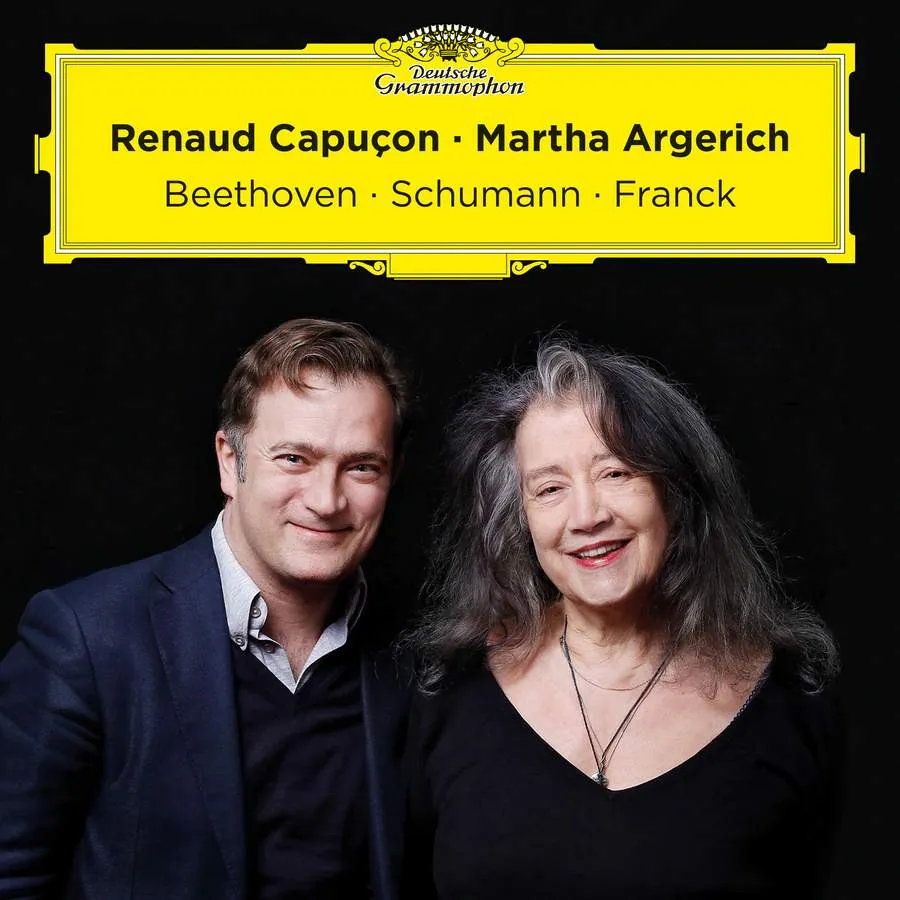
Beethoven • Franck • R Schumann Beethoven: Violin Sonata No. 9 in A, Op. 47 ‘Kreutzer’; Franck: Violin Sonata in A; R Schumann: Violin Sonata No. 1 in A minor, Op. 105 Renaud Capuçon (violin), Martha Argerich (piano) DG 486 3533 81:14 mins
Much of this recording is of the highest calibre, both technically and expressively – hardly a surprise given the abilities of these two artists. The only flies in the ointment are sporadic, but annoying chiefly because they seem so wholly unnecessary. In both the Beethoven ‘Kreutzer’ and Franck sonatas, Martha Argerich seems determined to set her own seal from the very beginning by ignoring what would seem to be the composers’ clear intentions.
In the Beethoven, the violin sets the tempo over four bars and the piano responds with another four in the same rhythms – so why does Argerich reset the tempo some half again slower? And why, at the end of the first phrase of the Presto, does she ignore the marked rallentandos?
Her rhythmic re-interpretation of the opening phrase of the Franck is no less bizarre. All very sad, given the wonderful playing by both herself and the violinist Renaud Capuçon of the central variations in the Beethoven, the minor one especially being profoundly moving. Mercifully the Schumann Sonata escapes most of the oddities, and such rubato as there is seems to flow naturally from what’s written.
The recording is of a live performance, and this surely must take the blame for the really unacceptable sounds in the second and last movements of the Franck Sonata. I suspect recording levels were set during rehearsals, but that Argerich was enthused by having an audience, leading her to grossly overpedal some of the second movement; and she is simply too loud in the last, making the violin’s contributions in what should be music of concord (as it follows the piano in canon) sound more like cries for help.
Roger Nichols